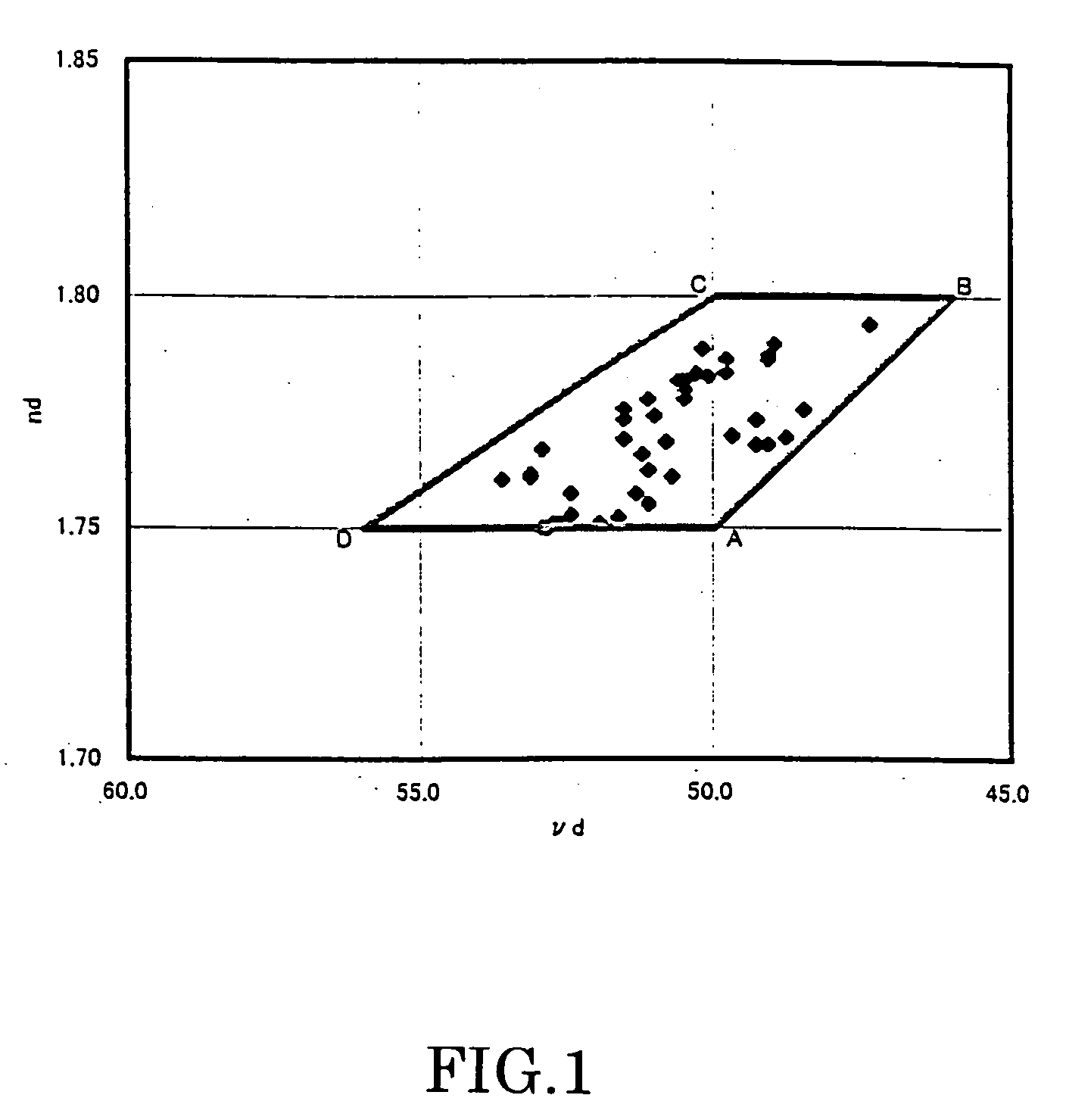Optical glass
- Summary
- Abstract
- Description
- Claims
- Application Information
AI Technical Summary
Benefits of technology
Problems solved by technology
Method used
Image
Examples
examples
[0119] Description will now be made about examples of the present invention. It should be noted that the scope of the present invention is not limited by these examples.
[0120] Compositions of examples of the present invention (Example No. 1 to No. 53) are shown in Tables 1 to 6 together with refractive index (nd), Abbe number (νd), glass transition temperature (Tg) and result of foreign matter rating (Class) of these examples. In the tables, composition of the respective components is expressed in mass %.
[0121] Likewise, compositions of comparative examples of the present invention (No. A to No. F) are shown in Table 7 together with refractive index (nd), Abbe number (νd), glass transition temperature (Tg) and result of foreign matter rating (Class) of these comparative examples.
TABLE 1Example No.12345678910SiO24.544.584.594.582.032.925.462.412.412.72B2O324.2023.3920.8121.7921.8625.6422.6925.7425.7425.74Y2O31.231.231.231.231.23La2O329.8128.1926.5727.7025.7330.2130.2133.2731.7430...
PUM
| Property | Measurement | Unit |
|---|---|---|
| Volume | aaaaa | aaaaa |
| Glass transition temperature | aaaaa | aaaaa |
| Glass transition temperature | aaaaa | aaaaa |
Abstract
Description
Claims
Application Information
 Login to View More
Login to View More - R&D
- Intellectual Property
- Life Sciences
- Materials
- Tech Scout
- Unparalleled Data Quality
- Higher Quality Content
- 60% Fewer Hallucinations
Browse by: Latest US Patents, China's latest patents, Technical Efficacy Thesaurus, Application Domain, Technology Topic, Popular Technical Reports.
© 2025 PatSnap. All rights reserved.Legal|Privacy policy|Modern Slavery Act Transparency Statement|Sitemap|About US| Contact US: help@patsnap.com

